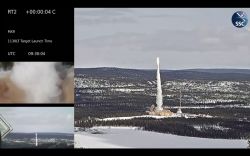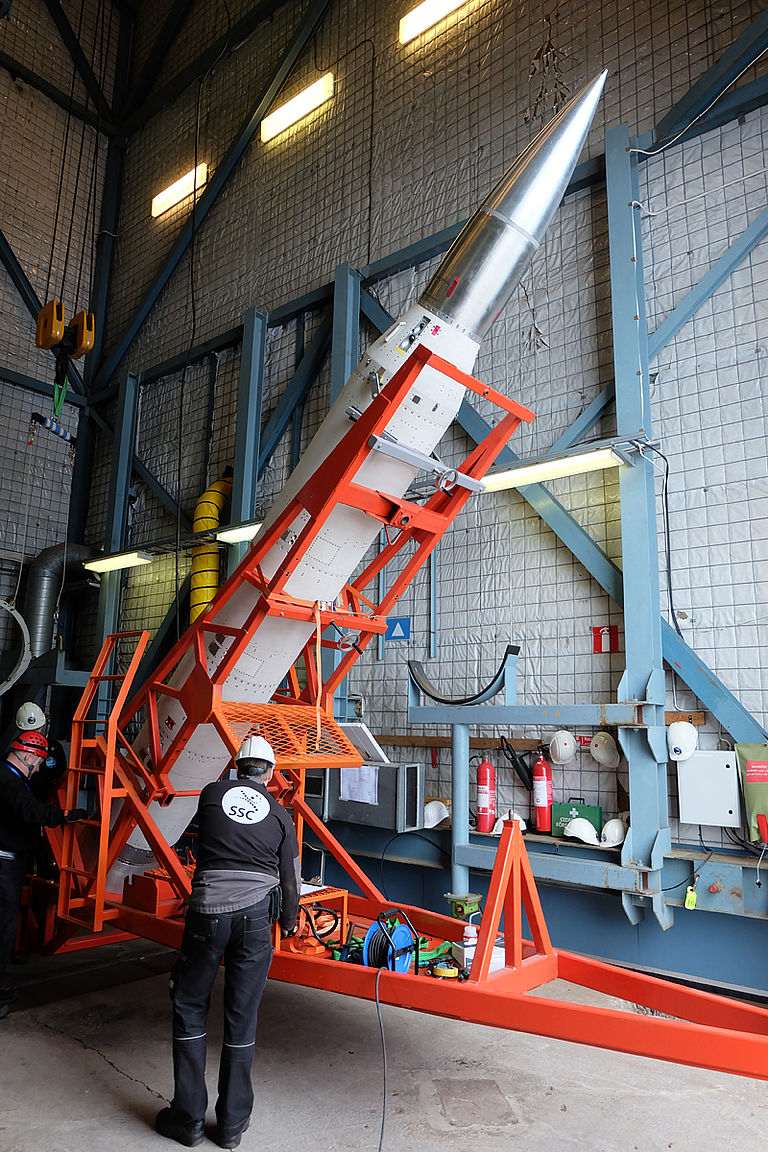Esrange launch site, North Sweden, April 7, 2017. At 11:30 local time, the noise of a launching rocket pierced the snow-covered landscape in the vicinity of the Esrange launch pad near Koruna in Northern Sweden. An unmanned MAXUS sounding rocket embarked on its ballistic flight, which took it to an altitude of 678 kilometers, where it provided weightless conditions for a period of 12 minutes. It was precisely this period of the flight that researchers were eagerly awaiting in order to perform the scientific and technological experiments which the rocket was carrying in its interior. On its 10th MAXUS mission, the rocket had a length of 15.5 meters and a launch mass of 12.3 tons. OHB System AG was again materially involved in the success of the mission.
OHB – a reliable partner to the MAXUS research program
Running since 1990, MAXUS is an ESA research project, to which DLR makes a considerable contribution. OHB System AG has been involved since the inception of the program and is responsible for providing the service systems (service module and recovery system). In addition, it oversees the integration of the payloads and the ensuing execution of environmental tests ahead of the go-ahead for launching.
OHB is also present at the launch site to assist with the execution of the mission. The 12 minutes of weightless conditions that MAXUS typically provides are used by scientists to perform their experiments that are contained in autonomous individual modules. These are mostly prototypes that are to be used on board the International Space Station at a later date. During the mission, scientists at the ground station at the Esrange launch site collect the telemetry and video data, which allows them to monitor the experiments and directly control them remotely via the OHB and range station equipment. The experiment data is stored at a high resolution on board the rocket during the flight and released to the scientists for evaluation after the scientific payload has been recovered. All OHB activities are performed in a subcontract awarded by Airbus Defence and Space.
The advantages of this research program include the re-usability of large parts of the payloads, the short preparation and access times by scientists and the relatively low safety requirements.
TEXUS: the little sister
MAXUS has a little sister called TEXUS, which has already completed more than 50 missions. This microgravity rocket has a length of only 12.5 meters but is used for the same purpose: It permits scientific experiments to be performed during weightless conditions lasting six minutes. OHB System AG also makes a substantial contribution to this research program in the same way ahead of the missions and at the launch pad. The next TEXUS double mission is scheduled for autumn 2017. The German Space Agency (DLR) is the sponsor of this program.
Further information on the MAXUS-9 mission and the scientific goals can be found here:
SSC: http://www.sscspace.com/missions-projects/ongoing/maxus9
DLR: http://www.dlr.de/dlr/desktopdefault.aspx/tabid-10212/332_read-22012#/gallery/26808
Contact for media representatives:
Marianne Radel
Head of Corporate Communications
Phone: +49 421 2020 9159
Email: marianne.radel@ohb.de
Contact for investors and analysts:
Marcel Dietz
Investor Relations
Phone: +49 421 2020 6426
Email: ir@ohb.de


